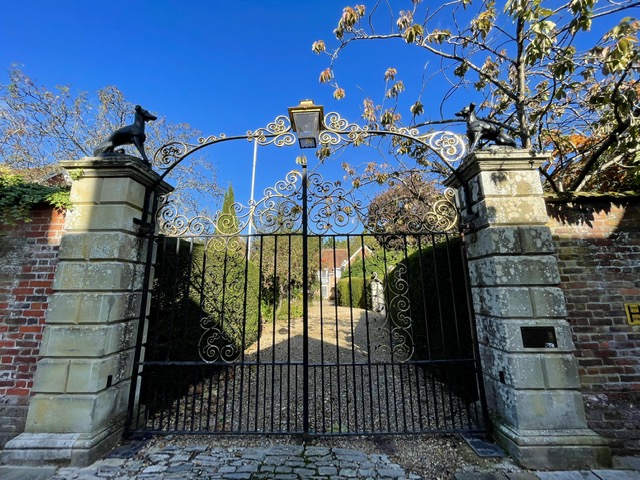
Much has been written about Elizabeth Harris (see references below) but no account of women who played a key role in the history of Salisbury would be complete without her.
Elizabeth Harris (1722-1781) came from the well-connected Clarke family of Somerset, the daughter of John and Catherine Clarke (nee Bowles). Elizabeth married James Harris in Alderbury in 1745. Their house at no.15 The Close, Salisbury (later Malmesbury House) had a reputation for hosting concerts and dramas. Handel had visited and performed there in 1739 in the room above St Ann’s Gate, which was converted into a theatre/music room for these performances. Visitors during Elizabeth’s time included the Duke of York (King George III’s brother) in 1762 and the composer John Marsh, who lived in Salisbury 1776-83.
In addition to welcoming the rich and famous, and James setting up the annual St Cecilia Concerts, which became the Salisbury Music Festival, Elizabeth and her two daughters, Gertrude (1749/50-1834) and Louisa (1753-1836) were themselves competent musicians and actors. Louisa would accompany herself on the harp as she sang. The 3 women put on plays, often with all-female casts, still uncommon at the time, but with meticulous attention to maintaining propriety.
What makes Elizabeth’s contribution distinctive is her lively accounts of these performances and of London concerts and theatre visits, particularly from 1761 when, after James’ election as MP for Christchurch, the family were more often in London. Many of the Harris letters were later published by her great grandson, another James, and they give extremely informative descriptions of contemporary social and cultural life in wealthy Georgian England. They are a mine of information on costume, parties and behaviour at concerts and the theatre. One letter to her son dated May 1st 1772 includes a particularly fascinating description of a Masque Ball and is well worth reading.


Elizabeth deserves to be remembered for her letter-writing skills. She was not only gifted in bringing everyday events to life. Her letters to her son James, a diplomat spending much time abroad, who later became the 1st Earl of Malmesbury, also give clear accounts of the lively politics of the time. She was obviously well-educated (we know she learned Latin and Greek, as did other contemporary Salisbury women such as Sarah Fielding and Jane Collier) but she had a particular gift for understanding and summarising the major political events of the day. These letters are to be recommended for the fascinating light they shed on the leading politicians of the day, many of whom were personally known to the Harris family. Elizabeth’s daughter Gertrude married Frederick Robinson, MP and moved to London. Her daughter Louisa never married. Elizabeth is buried with the rest of the Georgian Harrises in the North Transept of Salisbury Cathedral.
Written and researched by Beatrice King. Edited by Annie Hotton.
We would like to thank Celia Cotton and Ruth Newman for assistance with finding sources for this profile.
Photographs by Susan Brain.
Sources:
Howells, J. & Newman, R. (2014) Women in Salisbury Cathedral Close, Sarum Studies 5, publ. Sarum Chronicle 27-30
Forthcoming article [TBA]
A Series of Letters of the first Earl of Malmesbury, His Family and Friends from 1745-1820, Ed with notes by his grandson, the Rt Hon the Earl of Malmesbury, in 2 vols, vol 1, 1870, publ Richard Bentley, London
Further Reading:
Burrows, D. & Dunhill, R 2002, Music and Theatre in Handel’s world: The Family papers of James Harris (1732-1780) Oxford University Press
Dunhill, R 1997, ‘Music and Drama and the Harris Family of Salisbury 1735-1780, the Hatcher Review,Vol 5, no44
Robertson, D 1938, Sarum Close Jonathan Cape, 236-8
Williams, A the Social Life of Books 2017, Yale University Press, 193-7
